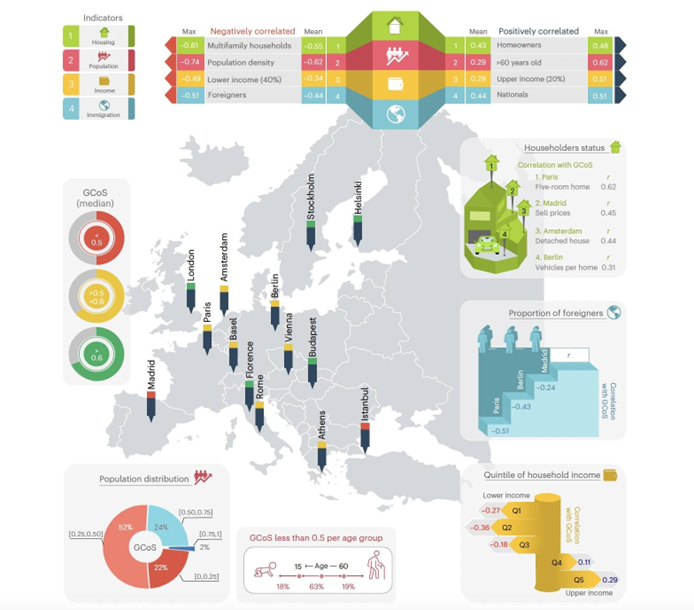
Heat waves in Europe are on the rise, causing a 57 percent increase in the number of people exposed compared to the decade 2000-2009. Especially in urban areas, the impacts of these extreme events are particularly pronounced due to urban structures causing the so-called heat island effect (urban heat island): heat stress from heat waves is the leading cause of climate-related premature deaths in Europe.
Among the most effective solutions is the development of urban green infrastructure, which is one of the best Nature Based Solutions (NBS – solutions that replicate natural processes) to mitigate overheating in cities and provide ecosystem services. However, the ability of citizens to benefit from these green cooling services is still relatively unknown.
A new study published in Nature Cities-which involved researchers from across the EU including, for Italy, the National Research Council (CNR) and the Euro-Mediterranean Center on Climate Change (CMCC)-examined the “environmental injustice” underlying access to green cooling solutions in fourteen major European urban areas, including Florence and Rome, using socioeconomic indicators. An innovative approach was developed for the study to assess citizens’ exposure to heat stress based on a combination of micrometeorological data, satellite data and simulation models.
“In all the urban areas analyzed, lower-income residents, such as tenants, immigrants and unemployed citizens, have more difficulty accessing green cooling services due to the unfavorable urban and social layout of many European cities,” says CMCC researcher and study co-author Giacomo Nicolini. In contrast, high-income residents, nationals and homeowners enjoyed above-average cooling supply.

Some of the cities covered in this study were selected because they host sites for measuring energy and greenhouse gas exchanges, such as the site of the Ximenian Observatory in Florence operated by the CNR, which has been providing this type of measurement for nearly two decades and is part of the ICOS (Integrated Carbon Observation System) network, the European reference infrastructure on the carbon cycle. Both CMCC and CNR are, in fact, actively involved in the collection and processing of data for the ICOS European network, and in the ICOS Italy national network, as well as the Ecosystem Thematic Centre – ETC, managing several sites and the data processing and validation chain for the entire international network.
“This study shows us that different adaptive capacity to climate change is not only an issue between high- and low-income countries, but also concerns social differences within rich European regions and cities. Mitigative interventions based on Nature Based Solutions will absolutely have to take due account of the social dimension in addition to the environmental one, with integrated and multidisciplinary analyses with high spatial detail,” concludes Beniamino Gioli, a researcher at the Institute of Bioeconomics of the CNR of Florence (Cnr-Ibe).






































